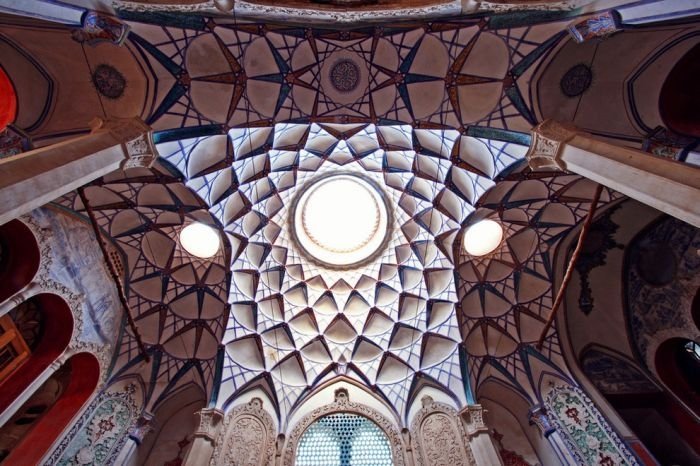|
|
Persian Architecture, Iran
|
The fall of the Persian empire to invading Islamic forces led to the creation of remarkable religious buildings in Iran. Arts such as calligraphy, stucco work, mirror work, and mosaic work, became closely tied with architecture in Iran in the new era.
Archaeological excavations have provided sufficient documents in support of the impacts of Sasanian architecture on the architecture of the Islamic world.
Many experts believe the period of Persian architecture from the 15th through 17th Centuries to be the most brilliant of the post-Islamic era. Various structures such as mosques, mausoleums, bazaars, bridges, and different palaces have mainly survived from this period.
Safavi Isfahan tried to achieve grandeur in scale (Isfahan's Naghsh-i Jahan Square is the 6th largest square worldwide) knowledge about building tall buildings with vast inner spaces. However, the quality of ornaments was decreased in comparison with those of the 14th and 15th centuries.
|
|









